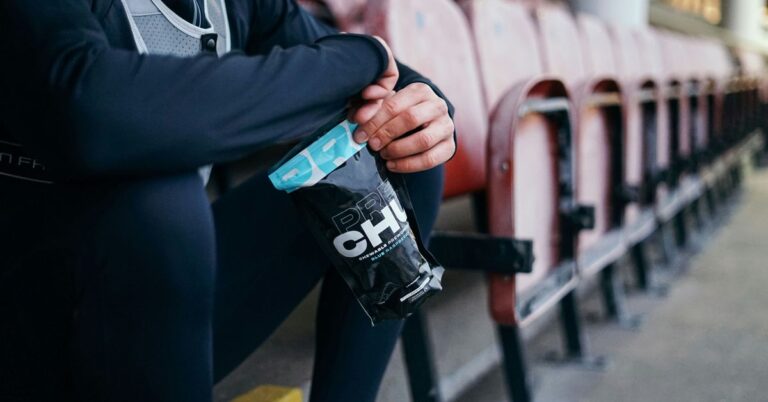Elevate Your Game with These Unconventional Training Techniques
In the ever-competitive world of sports, athletes are constantly on the hunt for that elusive edge—something that can separate them from the pack. Traditional training methods have their merits, but as any seasoned competitor will tell you, sometimes you’ve got to think outside the box (or the gym, for that matter). If you’re ready to shake things up in your routine and elevate your game, here are some unconventional training techniques that just might do the trick.
1. The Power of Visualization
Let’s kick things off with something that might sound a bit woo-woo at first glance, but stick with me. Visualization isn’t just for meditation gurus or motivational speakers; it’s a powerful technique that some of the world’s best athletes swear by. Picture this: before a critical match or game, an athlete spends time mentally rehearsing their performance, imagining every detail—the sounds, the crowd, the feeling of victory. It’s like a mental dress rehearsal.
In fact, a study by researchers at the University of Southern California found that mental practice can enhance performance just as effectively as physical training. I remember speaking with a former Olympic swimmer who detailed how she would visualize every stroke before diving into the pool. “It’s like programming your brain for success,” she said, and I couldn’t agree more.
2. Training with Unusual Equipment
When was the last time you saw a professional athlete swinging a sledgehammer or flipping a tire? If you’re used to the standard dumbbells and barbells, it’s time to expand your horizons. Unconventional equipment can build strength and endurance in ways traditional weights can’t. For instance, training with a kettlebell not only enhances your strength but also improves flexibility and core stability.
Then there’s the whole world of sandbags and battle ropes—tools that might make you look like a scene out of a boot camp movie, but trust me, your muscles will thank you. You’ll engage multiple muscle groups, boost your cardiovascular system, and keep your workouts fresh and exciting. I once attended a workshop where we used logs as weights—talk about a workout! It was tough, yet exhilarating.
3. Dance Your Way to Fitness
Who says training has to be all sweat and grueling effort? Dance is an excellent way to improve your agility, coordination, and even strength—all while having a blast. Whether you’re busting out some hip-hop moves or trying your hand at ballet, dancing can provide a unique cardio workout that challenges your body in ways running on a treadmill simply can’t.
A friend of mine, a competitive gymnast, took up salsa dancing and found that not only did it improve her footwork, but it also made her more confident and relaxed during competitions. “It’s like having fun while working out,” she told me, and I could see the difference in her performance. So, if you’re looking for a way to spice up your training, grab a partner (or go solo) and hit the dance floor!
4. Incorporating Animal Movements
Ah, the primal movement patterns—bear crawls, frog jumps, crab walks. It sounds a little silly, but hear me out. These movements are not just for kids on the playground; they can significantly enhance your strength, flexibility, and mobility. Many athletes are now incorporating animal movements into their training regimens as a way to develop functional strength.
Bear crawls, for instance, engage your entire body and enhance your core stability. When I first tried this technique at a fitness camp, I felt like I was back in gym class, but the benefits were undeniable. I could feel my shoulders, core, and legs all working in harmony—something you don’t quite get when you’re doing standard crunches.
5. Cold Water Therapy
Now, this one might raise a few eyebrows, but cold water therapy is gaining traction among athletes for recovery and performance enhancement. Ice baths have long been a post-game ritual for many, but the benefits extend beyond just reducing soreness. Cold exposure can increase circulation, reduce inflammation, and even boost your mood (who doesn’t love a good endorphin rush?).
Personally, I was skeptical until a coach challenged me to take a dip in a chilly lake after a long run. Let me tell you, the shock was real, but I emerged feeling invigorated and surprisingly refreshed. Studies suggest that incorporating regular cold exposure can improve your overall resilience (mental and physical)—and let’s face it, every athlete could use a bit more of that.
6. Mindfulness and Meditation
While some athletes focus solely on the physical aspect of training, the importance of mental preparation can’t be understated. Mindfulness and meditation can help you develop a laser-like focus, manage anxiety, and improve your overall performance. It’s not about sitting cross-legged and chanting—though if that works for you, go for it! It’s about being present and aware of your thoughts and feelings.
I once attended a workshop led by a sports psychologist who emphasized the need for athletes to cultivate a calm mind. He guided us through breathing exercises that, surprisingly, left me feeling more centered and ready to tackle tough workouts. Simple techniques, like focusing on your breath before competitions, can make a world of difference when the pressure is on.
7. Training in Unfamiliar Environments
Change of scenery, anyone? Training in new or unconventional environments can stimulate your body and mind in ways you might not expect. Whether it’s running on a beach, hiking in the mountains, or even practicing yoga at a park, varying your surroundings can break the monotony of your routine and reignite your passion for your sport.
There’s a reason why so many athletes flock to nature—it’s refreshing! I remember taking a workout retreat in the woods and finding that my energy levels soared. The fresh air, beautiful scenery, and even the uneven terrain challenged my body differently. Plus, there’s something about being outdoors that just feels good, doesn’t it?
8. The Art of Play
As adults, we often forget the joy of play—something that comes naturally to kids but might feel forced as we grow older. Incorporating play into your training can significantly enhance your performance while keeping things fun. Whether it’s playing pickup basketball, joining a recreational soccer league, or just having a friendly competition with friends, the benefits are immense.
One athlete I spoke with mentioned how he joined a local dodgeball league as a way to blow off steam after grueling training sessions. “It was a blast! I didn’t realize how much I missed just playing,” he said. The laughter, the camaraderie, and the thrill of competition all contributed to his overall well-being and even improved his performance in his primary sport. Who knew dodgeball could be such a game-changer?
9. Focus on Recovery Techniques
We often hear about the importance of training hard, but what about recovery? Unconventional recovery techniques are gaining popularity among athletes looking to optimize their performance. From floatation therapy to cryotherapy, these methods can help speed up recovery times and enhance overall well-being.
I once got to try a float tank (think sensory deprivation) after a particularly intense training cycle. At first, I felt a bit claustrophobic, but once I settled in, it was an otherworldly experience. The weightlessness allowed my body to relax fully, and I emerged feeling like I’d taken a mini-vacation. In the realm of recovery, embracing these quirky techniques can make a world of difference.
10. Strength Training Through Martial Arts
Martial arts, with their emphasis on discipline, focus, and endurance, can serve as a unique form of strength training. Whether it’s karate, judo, or Brazilian jiu-jitsu, the benefits extend beyond just physical strength. Practicing martial arts can teach you resilience, enhance your agility, and improve your mental fortitude.
A friend of mine who took up Muay Thai shared that the techniques involved in striking and grappling had improved his overall athleticism in other sports. “I never thought kicking a bag could make me a better runner,” he said, and it was fascinating to see how cross-training in this manner can boost performance across the board.
11. The Importance of Nutrition Hacks
It’s no secret that proper nutrition plays a vital role in an athlete’s performance, but let’s talk about some unconventional hacks that can take your diet to the next level. While meal prep and balanced diets are crucial, experimenting with nutrient timing—eating specific nutrients before and after workouts—can optimize your performance.
For instance, consuming protein and carbohydrates shortly after a workout can enhance recovery. Some athletes even swear by specific superfoods or supplements that aid in recovery or boost energy. I once tried incorporating beet juice into my pre-workout routine, and the increased stamina was impressive—though I did feel a bit like a walking science experiment.
12. The Power of Teamwork in Training
Finally, let’s not underestimate the power of collaboration. Training with a group or a partner can not only push you to work harder but can also provide motivation and accountability. There’s something about the camaraderie of a team that can elevate your performance. Whether you’re training for a marathon or simply trying to stay fit, having a partner can make the journey much more enjoyable.
I’ll never forget training for my first half-marathon with a group of friends. We pushed each other, shared tips, and celebrated small victories along the way. The support system was invaluable, and it turned a daunting challenge into a fun adventure. Plus, the post-run brunches were a well-deserved perk!
Conclusion: Elevate Your Game
In closing, elevating your game doesn’t always require the latest gear or a pricey gym membership. Sometimes, it’s about embracing the unconventional and finding joy in the process. From visualization techniques to incorporating animal movements, there’s a world of creative training methods waiting to be explored. So why not step outside your comfort zone and give them a try?
Whether you choose to dance, play, or immerse yourself in nature, remember that the journey is just as important as the destination. Embrace the quirks, have fun, and elevate your game—one unconventional training session at a time.













